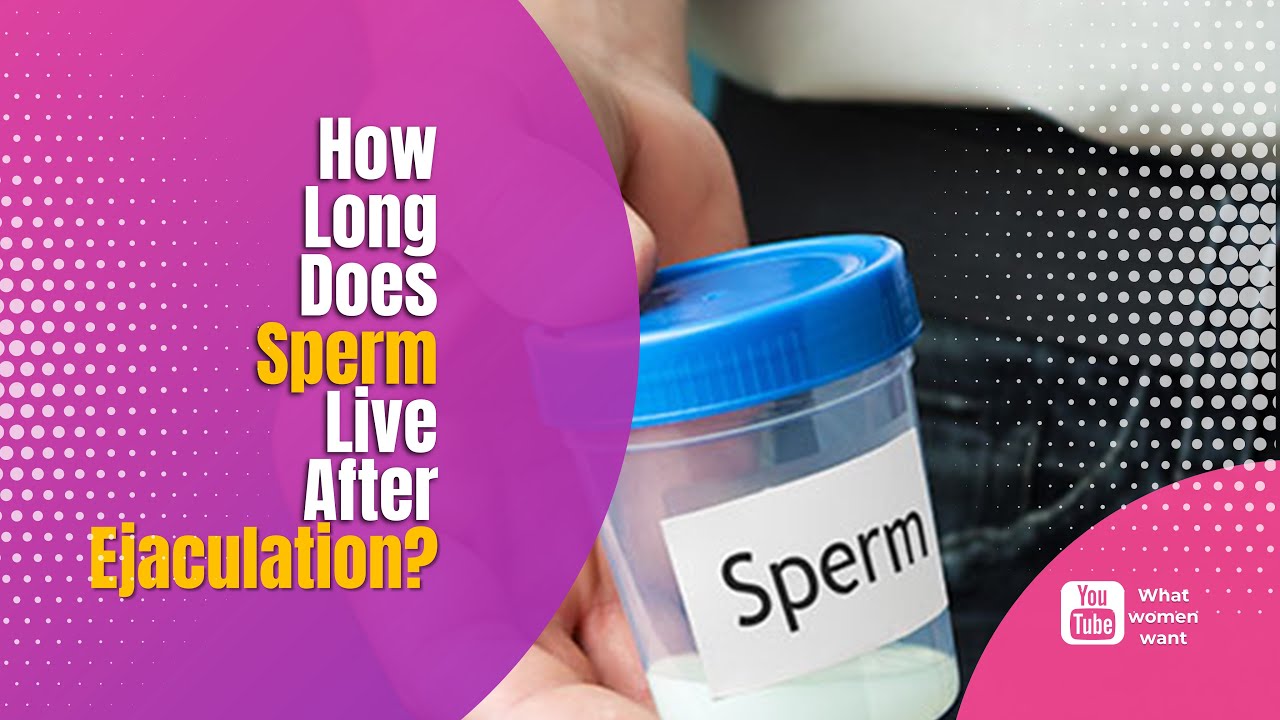Sperm, the microscopic tadpole-like cells responsible for reproduction, are the primary factor behind pregnancy. As people engage in sexual encounters, the question of how long sperm can survive in a condom often arises. Condoms, also known as barrier contraceptives, have long been recognized as an effective method to prevent unwanted pregnancies and sexually transmitted infections (STIs). Let's delve deeper into the intricate details of sperm lifespan within condoms.

Effectiveness of Condoms in Preventing Pregnancy and STIs
Condoms are sheaths typically made of latex or polyurethane, designed to cover the penis during sexual activity. They are a reliable form of contraception when used consistently and correctly. Statistically, condom usage boasts an impressive success rate of around 98% against unwanted pregnancies. However, we should acknowledge that with typical use, the effectiveness drops slightly to approximately 85%.
Condoms also play a crucial role in safeguarding against various STIs, including but not limited to HIV, chlamydia, gonorrhea, and herpes. They form a barrier that physically prevents contact with potentially infected bodily fluids, and when used alongside other prevention methods, such as regular testing and mutual exclusivity, they offer heightened protection.
How Long Can Sperm Survive in Condoms
Sperm require a conducive environment to survive and complete their journey towards fertilization. Outside the human body, they are highly sensitive and vulnerable, meaning they have a limited lifespan. When sperm are ejaculated into a condom, their survival chances dwindle.
On average, sperm can live up to a few hours within a condom. However, it's important to note that this timeframe should not be relied upon as a method of contraception. Even with some sperm dying within the condom, it only takes a single live sperm to fertilize an egg and initiate pregnancy.
It's also crucial to consider the quality of the condom, as those made from higher-quality materials may provide better protection against sperm survival. Proper storage conditions, such as keeping condoms in a cool, dry place away from sunlight, can also help maintain their integrity.
Conclusion
Understanding the lifespan of sperm within condoms is essential in assessing the efficacy of barrier contraceptives. While sperm can live for a few hours within a condom, the purpose of these contraceptives is to prevent pregnancy and protect against STIs. For optimal effectiveness, it's vital to use condoms correctly, consistently, and alongside other preventive measures. Remember, knowledge is empowerment when it comes to making informed decisions regarding sexual health and contraception.
Related FAQs about how long does sperm live in condoms
How effective are condoms in preventing pregnancy?
Condoms have a success rate of approximately 98% when used consistently and correctly, making them highly effective in preventing unwanted pregnancies.
Can condoms protect against sexually transmitted infections (STIs)?
Yes, condoms offer protection against various STIs, including HIV, chlamydia, gonorrhea, and herpes. Using condoms consistently, alongside other preventive measures, such as regular testing, provides heightened protection.
How long can sperm survive in condoms?
Sperm can live for a few hours within a condom, but relying on this timeframe as a form of contraception is not advisable. Even a single live sperm can initiate pregnancy.
Do different condom materials affect sperm survival?
Yes, the quality of the condom material can impact sperm survival. Higher-quality materials provide better protection against sperm, further reducing the chances of fertility.
What are the proper storage conditions for condoms?
Condoms should be stored in a cool, dry place away from sunlight. Proper storage helps maintain the integrity of the condom and ensures its effectiveness.
Glossary about how long does sperm live in condoms
1. Sperm: Sperm refers to the microscopic tadpole-like cells responsible for reproduction in males. They are essential for fertilizing an egg and initiating pregnancy.
2. Condoms: Condoms, also known as barrier contraceptives, are sheaths made of latex or polyurethane that are used to cover the penis during sexual activity. They are effective at preventing unwanted pregnancies and protecting against sexually transmitted infections (STIs).
3. STIs: STIs stands for sexually transmitted infections. These are infections that are primarily transmitted through sexual contact. Common STIs include HIV, chlamydia, gonorrhea, and herpes.
4. Latex: Latex is a natural material derived from the sap of the rubber tree. It is commonly used in the production of condoms due to its stretchability and durability.
5. Polyurethane: Polyurethane is a synthetic material used as an alternative to latex in condom production. It is hypoallergenic and suitable for individuals with latex allergies.
6. Contraception: Contraception refers to methods or devices used to prevent pregnancy. Condoms are a form of contraception that provide a physical barrier to prevent sperm from reaching the egg.
7. Ejaculation: Ejaculation is the act of releasing semen, which contains sperm, from the penis. Condoms capture ejaculated semen, preventing direct contact with the vagina and reducing the chances of pregnancy.
8. Fertilization: Fertilization is the process by which a sperm cell penetrates an egg cell, forming a zygote that develops into an embryo. It is the initial step in pregnancy.
9. HIV: HIV stands for human immunodeficiency virus. It is a viral infection that attacks the immune system, leading to acquired immunodeficiency syndrome (AIDS). Condoms provide protection against HIV transmission.
10. Chlamydia: Chlamydia is a common bacterial STI that can infect both men and women. It is often asymptomatic and can lead to serious reproductive health complications if left untreated. Condoms offer protection against chlamydia transmission.
